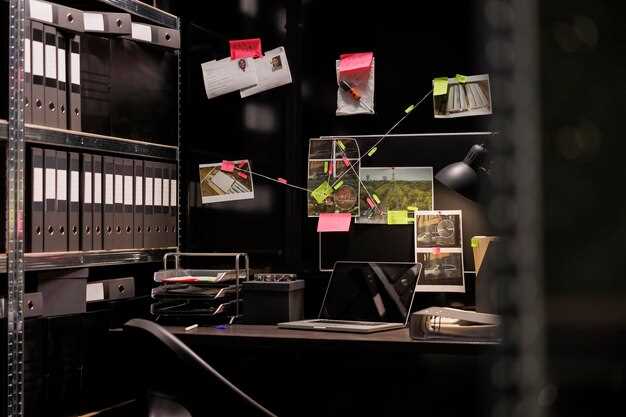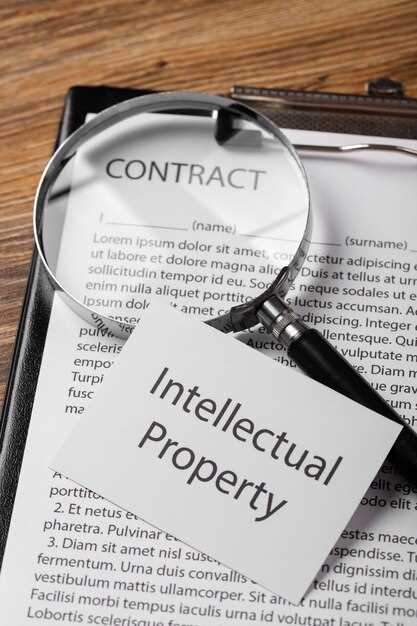Criminal Justice System – An Overview
Understanding the criminal justice system is vital for anyone interested in social justice. This system includes law enforcement, the judiciary, and corrections, each playing a unique role in maintaining public safety and enforcing laws. Effective engagement with each of these components can enhance community trust and reduce crime rates.
Law enforcement agencies act as the first point of contact in the justice process. They investigate crimes, gather evidence, and make arrests based on probable cause. Training in community policing strategies reinforces relationships between officers and the communities they serve, fostering transparency and cooperation.
The courtroom process follows, where judges, juries, and attorneys interact to uphold justice. Knowing the rights of defendants and the responsibilities of legal representatives ensures fair trials. Engaging with local legal resources can provide clarity on legal rights and obligations, making the complex legalese more accessible to the public.
Finally, the corrections system manages sentenced individuals. Rehabilitation programs within prisons can significantly reduce recidivism. Involvement in advocacy for such programs can contribute to a more just outcome for offenders, ultimately benefiting society as a whole. Understanding these elements not only informs but empowers individuals to participate actively in their communities.
Understanding the Structure of the Criminal Justice System
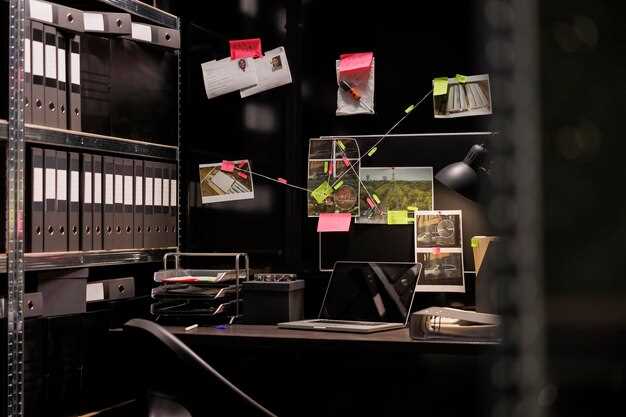
The criminal justice system consists of various components that work together to enforce laws, maintain order, and uphold justice. Understanding its structure helps individuals navigate this complex framework effectively.
Key Components
- Law Enforcement: Police agencies investigate crimes, gather evidence, and arrest suspects. They serve as the first point of contact within the system and play a significant role in crime prevention.
- Courts: The judicial system interprets laws and enacts justice. Judges, prosecutors, and defense attorneys engage in hearings and trials to resolve criminal cases. Each party has distinct roles, ensuring a fair process.
- Corrections: After a conviction, this component oversees the punishment and rehabilitation of offenders. Prisons and probation services provide different levels of correctional measures, focusing on reintegration into society.
The Interaction Between Components
These components interact continuously. Law enforcement collects and presents evidence, while courts manage the legal proceedings. Corrections execute sentences determined by the courts. This interaction ensures that each component supports the others for overall system effectiveness.
Understanding these elements allows citizens to appreciate their roles in society. Engaging with law enforcement, participating in jury duty, or supporting rehabilitation initiatives contribute to a more just system. By recognizing how each part functions, individuals can advocate for improvements and engage more meaningfully with the criminal justice system.
The Role of Law Enforcement Agencies in Crime Prevention
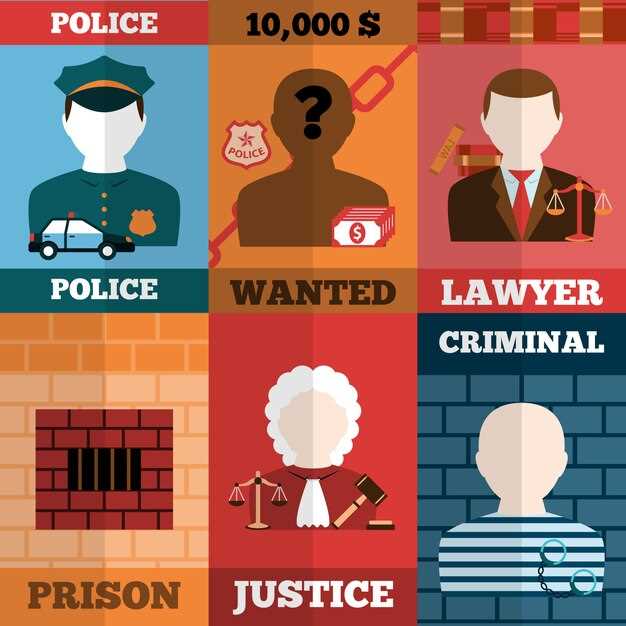
Law enforcement agencies should focus on community engagement to prevent crime effectively. Building strong relationships with community members allows officers to gather valuable information and insights that may not be reported formally. Regular meetings and open forums can encourage residents to voice their concerns and collaborate on safety initiatives.
Officers can implement targeted crime prevention strategies based on local crime data. Analyzing crime trends helps to allocate resources to high-risk areas, ensuring that patrols are visible during peak times. Data-driven policing allows for a proactive approach, addressing potential issues before they escalate.
Educational programs are an excellent way for law enforcement to engage with the community. Workshops on crime prevention methods, such as neighborhood watch schemes and personal safety tips, empower residents to take an active role in safeguarding their surroundings. These initiatives promote awareness and collaboration between law enforcement and the community.
Investing in technology also enhances crime prevention efforts. Surveillance cameras, license plate readers, and social media monitoring can provide law enforcement with the tools needed to respond quickly to incidents and deter potential criminals. Community awareness of these technologies can further discourage crime.
Lastly, partnerships with local organizations and businesses can strengthen crime prevention strategies. Joint initiatives may include safety audits and resource sharing, creating an inclusive environment where public safety is a shared responsibility. Such collaborations foster trust and open lines of communication, which are critical to effective crime prevention.
How Police Investigations are Conducted
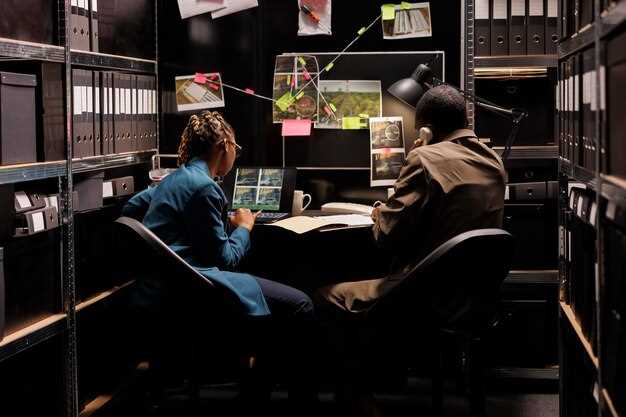
Police investigations commence with the initial report of a crime, prompting officers to gather information and evidence systematically. First, officers cordon off the crime scene to maintain its integrity, ensuring that no evidence is tampered with. This step is crucial for securing reliable results later.
Investigators then conduct interviews with witnesses and victims. Open-ended questions help elicit detailed accounts, while maintaining a collaborative atmosphere encourages openness. Following this, detectives analyze facts and leads, cross-referencing them against databases and prior cases to identify patterns or connections.
Forensic specialists play a significant role during investigations. They collect and examine physical evidence, such as fingerprints, DNA, and ballistic information. This scientific approach enhances the credibility of findings and helps form a clearer picture of the events in question.
As leads develop, investigators often create timelines and maps to visualize the sequence of events, which assists in understanding the larger context of the crime. Collaboration with other agencies, such as cybercrime units or intelligence services, can provide additional insights and resources, amplifying the effectiveness of the case.
Engaging with the community fosters trust and can lead to tips that might not emerge through traditional investigating methods. Community outreach ensures that the police remain approachable, creating an environment where people feel encouraged to share information.
Finally, once sufficient evidence is gathered, detectives work on compiling a thorough report. This document will serve as the foundation for potential prosecutions, outlining the case’s trajectory from initial report to the conclusions drawn from investigative efforts.
Chain of Custody: Importance in Criminal Cases
Establishing a clear chain of custody is critical for maintaining the integrity of evidence in criminal cases. Each piece of evidence must be documented at every stage, from collection to presentation in court. Ensure that every transfer of evidence is recorded meticulously, including who collected, handled, and stored it.
Utilize detailed logs to track the movement of evidence. This documentation serves to confirm that the evidence has not been altered, tampered with, or contaminated. Any gaps or inconsistencies in the chain of custody can lead to challenges regarding the admissibility of that evidence in court.
Implement standard operating procedures for evidence collection and handling. Train all personnel involved in the process, ensuring they understand the importance of adhering to these procedures. Regular audits can identify potential weaknesses in your chain of custody practices.
Incorporate technology into your evidence management system. Tools such as barcoding or digital tracking can streamline documentation processes and reduce human error. Make sure to back up records in secure locations to prevent data loss.
When presenting evidence in court, be prepared to explain the entire chain of custody. Demonstrating that the evidence is reliable and has been properly handled strengthens its credibility. Clear communication regarding your procedures reinforces trust with the jury and judges.
By prioritizing a robust chain of custody, you enhance the reliability of evidence, which is crucial for achieving justice in criminal proceedings.
Interrogation Techniques Used by Law Enforcement
Developing a solid understanding of interrogation techniques applied by law enforcement can enhance the effectiveness of the investigative process. Different strategies serve unique purposes and can significantly influence the outcome of an interrogation.
Custodial Interrogation
During custodial interrogation, officers engage suspects after they have been deprived of their freedom. This technique allows law enforcement to question individuals under specific legal guidelines. Police often begin by reading suspects their rights, ensuring that they understand their entitlement to an attorney. Following that, officers may employ rapport-building tactics to create a comfortable environment, encouraging the suspect to speak freely.
Behavioral Analysis
Behavioral analysis involves observing non-verbal cues, such as body language and tone of voice, to gauge a suspect’s truthfulness. Officers trained in this method often notice changes in a suspect’s demeanor when certain topics arise. This technique helps law enforcement decide when to push harder or take a more subtle approach based on the suspect’s reactions.
Application of psychological principles can also play a role in suspect interviews. Techniques such as the Reid Technique focus on minimizing denials and introducing the idea of a confession being a relief to the suspect. By highlighting the consequences of denial and making the suspect feel a sense of control, officers can guide them toward revealing information.
Additionally, building a narrative around the suspected crime can lead to a confession. Officers present details that may prompt the suspect to fill in gaps, leading to revelations about their involvement. A well-structured interrogation draws upon facts while allowing the individual to share their perspective, which can often lead to a more productive exchange.
Overall, mastering these techniques allows law enforcement to perform thorough investigations while adhering to ethical standards and legal requirements. With the right approach, officers can effectively elicit valuable information from suspects.
Process of Charging a Suspect: From Arrest to Court
After an arrest, law enforcement typically submits a report to the prosecutor’s office. This report evaluates evidence and recommends charges. The prosecutor will then assess the strength of the evidence and decide whether to formally charge the suspect.
Charges may include:
- Misdemeanors
- Felonies
- Infractions
If the prosecutor decides to proceed, they file a document known as a complaint or an indictment. This step confirms the charges against the suspect and initiates court proceedings.
Subsequent to filing charges, the suspect appears before a judge for an arraignment. During this hearing, the judge informs the suspect of their rights, reads the charges, and allows the suspect to enter a plea. The options typically include:
- Guilty
- Not guilty
- No contest
Following the arraignment, the court may schedule additional hearings, such as pre-trial motions or bail hearings. Pre-trial motions can address issues like evidence admissibility or request the dismissal of charges.
Once pre-trial matters are resolved, the case moves toward trial. The prosecution and defense prepare their arguments, witness testimonies, and evidence presentation. Both sides have opportunities for discovery, which allows for sharing information and strategies.
During trial, a jury or judge hears the case. Each party presents their evidence and arguments. After deliberation, a verdict is reached. If found guilty, sentencing follows. If acquitted, the suspect is released, and the case concludes.
Understanding the Rights of the Accused
The accused possess specific rights that safeguard their freedom and ensure fair treatment within the justice system. The right to legal representation stands out as a foundational element. Individuals should secure an attorney immediately upon arrest. This protects their interests and ensures they understand the charges and proceedings against them.
The right to remain silent is another significant protection. Accused individuals should use this right to avoid self-incrimination. Law enforcement often uses questioning techniques that may lead to unintended admissions. Politely asserting the right to remain silent during police interrogations can prevent complications.
A timely trial is also a critical right. The accused should not be subjected to prolonged detention without trial. Familiarity with local laws regarding timeframes for arraignment and trial can be advantageous. If these timelines are exceeded, moving for dismissal may be necessary.
Another vital right is the presumption of innocence. Until proven guilty, the accused should expect treatment that reflects this principle. Any public statements made by law enforcement or media should maintain this perspective to avoid prejudice during proceedings.
A fair jury trial is a further safeguard. The accused have the right to be tried by an impartial jury of their peers, which helps mitigate biases. Choosing jurors through a vetting process allows for the selection of individuals likely to deliver an unbiased verdict.
Transparency is crucial, thus the accused must receive access to evidence and documentation that pertains to their case. Understanding the evidence the prosecution intends to present is vital for constructing an effective defense.
Above all, the accused should remain proactive about their rights. Regular communication with legal counsel ensures that they are informed and prepared at each stage of the legal process. Awareness of these rights empowers individuals to engage with the system effectively and assertively.
The Function of Prosecutors in Criminal Cases
Prosecutors play a pivotal role in the criminal justice system by representing the government and ensuring justice is served. They review evidence, determine charges, and present the case in court, all while upholding the law and protecting the rights of victims.
Investigation and Charging Decisions
Prosecutors begin their work by assessing evidence from law enforcement agencies. They evaluate the strength of the case, considering applicable laws and potential defenses. This process involves deciding whether there is sufficient evidence to file charges against a suspect. If evidence is lacking, prosecutors may opt not to proceed, which helps prevent wrongful accusations and promotes ethical standards within the justice system.
Courtroom Responsibilities
In the courtroom, prosecutors present arguments, examine witnesses, and submit evidence to establish the defendant’s guilt. They strive to convey the narrative of the crime clearly and persuasively, while also respecting legal procedures and the rights of the accused. Effective communication skills and a thorough understanding of legal principles are crucial for successful prosecution. Once a verdict is reached, prosecutors advocate for appropriate sentencing that reflects the severity of the crime and aims to deter future offenses.
Defense Strategies in Criminal Trials
Choose a specific defense strategy to challenge the prosecution’s case effectively. Common strategies include:
| Strategy | Description |
|---|---|
| Alibi | Prove the defendant’s presence elsewhere during the crime. |
| Self-Defense | Assert that the defendant acted to protect themselves from imminent harm. |
| Insanity Defense | Claim that mental health issues impair the defendant’s understanding of right and wrong. |
| Coercion or Duress | Argue that the defendant committed the crime under threat of harm. |
| Entrapment | Show that law enforcement induced the defendant to commit a crime they would not have otherwise committed. |
Gather compelling evidence to support the chosen strategy. Witness testimonies, expert opinions, and physical evidence play significant roles.
Consider plea bargains as a negotiation tactic. Sometimes, accepting a deal reduces potential penalties and resolves cases more quickly.
Maintain clear communication with legal counsel. Regular discussions ensure alignment on defense tactics and enable adaptation as the case progresses.
Finally, understand the importance of jury selection. A sympathetic jury can enhance the chances of a favorable outcome, so aim for a juror pool that is open-minded to the defense strategy employed.
The Role of Judges and Court Proceedings
Judges actively manage courtroom proceedings, ensuring fairness and adherence to the law. They interpret statutes, evaluate evidence, and provide rulings on legal questions. This direct involvement helps maintain justice and order during trials.
Responsibilities of Judges
Judges preside over both civil and criminal cases. They analyze the facts presented, guide juries, and make decisions on procedural matters. By maintaining decorum in court, judges create an environment conducive to a fair trial. Their decisions impact the lives of defendants, plaintiffs, and the community as a whole.
Court Proceedings Overview
Court proceedings follow a structured format. After the initial arraignment, where charges are read, pretrial motions often occur. Judges decide on admissibility of evidence, plea agreements, and any potential dismissals. During the trial, they oversee witness testimonies and manage opening and closing arguments.
Post-trial, judges often deliver sentences or rulings based on the jury’s verdict. Their role does not end there; they may also handle appeals, ensuring that the legal process is upheld in subsequent reviews. Understanding the significance of each phase highlights the judge’s integral role in the criminal justice system.
Impact of Sentencing Guidelines on Offenders
Sentencing guidelines provide structured frameworks that influence judicial decision-making. They significantly affect offenders by establishing standardized penalties for specific crimes.
Research indicates that adherence to these guidelines leads to greater consistency in sentencing. This consistency decreases disparities based on race, socioeconomic status, or geography. As a result, offenders experience more predictable outcomes, fostering trust in the system.
Moreover, guidelines encourage rehabilitative approaches, focusing on offender accountability and reducing recidivism. Offenders are often steered towards educational and vocational programs, which equip them with skills to reintegrate into society successfully.
Several key impacts of sentencing guidelines on offenders include:
- Predictability: Offenders can better anticipate their sentences based on established benchmarks.
- Fairness: Reduced variability in sentencing promotes a sense of justice among affected individuals.
- Rehabilitation: Programs integrated into sentencing guidelines aim to address underlying issues that contribute to criminal behavior.
- Deterrence: Knowing the standard penalties can discourage individuals from engaging in criminal activity.
Some critics argue that rigid guidelines may fail to account for unique circumstances of individual cases, potentially leading to unjust outcomes. Flexibility is necessary for judges to consider factors such as intent, background, and remorse.
Balancing structure with discretion presents challenges but creates opportunities for a more nuanced approach to justice.
In summary, sentencing guidelines have a profound impact on offenders, shaping their experiences within the criminal justice system while promoting accountability and rehabilitation. By fostering fairness and predictability, these guidelines contribute to a more equitable legal framework.
Video:
Overview of the USA Criminal Justice System Part 1
Overview of the USA Criminal Justice System Part 1 by Chaninat & Leeds Co., Ltd. 924 views 9 years ago 30 minutes
Q&A:
What are the main components of the criminal justice system?
The criminal justice system typically encompasses three primary components: law enforcement, the judiciary, and corrections. Law enforcement agencies are responsible for investigating crimes and apprehending offenders. The judiciary, including courts, is tasked with interpreting laws, ensuring fair trials, and determining guilt or innocence. Finally, the corrections system deals with the punishment and rehabilitation of convicted individuals, which can include incarceration, parole, or probation.
How does the criminal justice process generally unfold from arrest to conviction?
Once a suspect is arrested, the process usually begins with booking, which involves recording the suspect’s information and the charges against them. Following booking, the suspect appears before a judge for an initial hearing, where formal charges are presented. If the case proceeds, it may go to a preliminary hearing or grand jury, followed by arraignment where a plea is entered. If the case goes to trial, both the prosecution and defense present their evidence. After deliberation, a verdict is reached, and if found guilty, the sentencing phase occurs, determining the appropriate punishment.
What role does rehabilitation play in the corrections component of the criminal justice system?
Rehabilitation is a fundamental aspect of the corrections component, aimed at reforming offenders to prevent future crimes. Programs may include educational opportunities, vocational training, and therapy sessions. The goal is to address underlying issues such as substance abuse or mental health problems, helping individuals reintegrate into society successfully. A rehabilitative approach intends to reduce recidivism rates by equipping offenders with the skills and support they need to lead law-abiding lives after serving their sentences.
What challenges does the criminal justice system face today?
The criminal justice system encounters several challenges, including issues like overpopulation in prisons, racial disparities, and insufficient funding for programs that support rehabilitation. Additionally, there is ongoing debate about the effectiveness of certain policing practices and their impact on community trust. Ensuring fair treatment and access to legal representation for all individuals, as well as addressing mental health concerns within the system, are also significant challenges that require ongoing attention and reform efforts.
How does public perception influence the criminal justice system?
Public perception plays a significant role in shaping policies and practices within the criminal justice system. A community’s views can affect how law enforcement operates, the focus on certain types of crime, and the level of resources allocated to different programs. For instance, if the public strongly advocates for harsher penalties for particular offenses, lawmakers may respond by enacting more stringent laws. Additionally, media portrayal of crime and justice can alter public perceptions, potentially leading to increased concerns about safety or calls for reform, further impacting how the system functions.
What are the main components of the criminal justice system?
The criminal justice system is typically divided into three main components: law enforcement, the judiciary, and corrections. Law enforcement agencies, such as the police, are responsible for preventing and investigating crimes. The judiciary, which includes courts and judges, handles the legal process of determining guilt or innocence and administers justice. Lastly, the corrections system encompasses prisons, jails, probation, and parole, focusing on the rehabilitation of offenders and ensuring public safety. Each component plays a unique role in maintaining order and justice within society.
